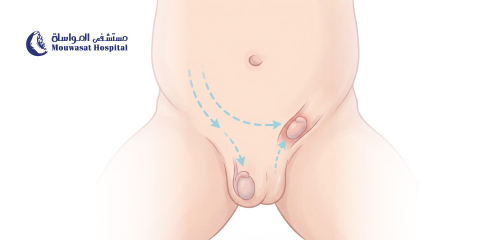
In Prostate Cancer Awareness Month, Learn about its symptoms and treatment methods
September is Prostate Cancer Awareness Month, ranking the ninth among men's cancers globally, and the eighth in terms of death rates.
It is important to know that the older a man is, the higher the risk of prostate cancer will be, especially if the person is obese or has a family history of this disease.
Early detection of the disease is very important to help detect prostate cancer and increase the rate of recovery from it, especially if its symptoms do not appear on the patient clearly except in the late stages.
Prostate cancer symptoms
More advanced prostate cancer may cause signs and symptoms, such as:
- Urination problems
- The weak force of flow into the urethra
- The appearance of blood in the urine
- Blood in semen
- Bone pain
- Loss in weight without trying
- Erectile dysfunction
Reasons for increased risks of Prostate Cancer
Causes that can increase the risk of prostate cancer include:
- Age. The older the person, the greater the risk is of prostate cancer. It is more common after the age of 50.
- Origin and Ethnicity. Black people are more likely to develop prostate cancer than other races, for reasons that are unknown to this day. Prostate cancer in black people is more severe.
- Family history of the disease. If a person's close relatives, such as a parent, sibling, or child, develop prostate cancer, then his risk of developing it increases.
- Pathological weight gain. Studies have shown that people who are obese are more likely to develop prostate cancer compared to people of normal weight. Cancer is more likely to be more serious and is more likely because it returns after treatment in people who are obese.
Prostate cancer complications
Prostate cancer complications and treatment include:
- Types of metastatic cancer. There is a chance that prostate cancer may spread to nearby body parts, such as the bladder, or through the bloodstream or lymphatic system to the bones or other organs. Prostate cancer that spreads to the bones can also cause pain and bone fractures.
- Urinary incontinence. Prostate cancer and its treatment can cause incontinence. Treatment for urinary incontinence depends on the type, severity, and likelihood of improvement over time. Treatment options include medication, catheters, and surgery.
- Erectile dysfunction can be caused by this condition, including surgery, radiotherapy, or hormone therapy. There are medications and suction devices that help with erection, and erectile dysfunction can be treated with surgery.
Prostate cancer treatment methods
There is more than one method to treat prostate cancer, and mixing of several treatments, such as: surgery with radiotherapy, or radiotherapy with hormonal therapy is the best solution to the disease.
The best treatment method for each case depends on several factors, including how quickly the tumor is growing, how far the tumor has spread, how old the patient is, how long he is expected to live, and the potential pros and cons of each type of treatment.
Here are the most common and used treatments for prostate cancer:
External radiotherapy
In external radiotherapy, very powerful X-rays are used to destroy cancerous cells. This type of radiation is very important for destroying cancerous cells, but its downside is that it may attack healthy tissues as well.
Radioactive implant
The implantation of a radioactive implant into the prostate gland has recently been an accepted and popular treatment method for treating prostate cancer.
This treatment method is usually used to treat small to medium-sized carcinomas, and they have a low degree of disease.
Complications and side effects of radioactive implant implantation include the following:
- Difficulty urinating.
- Side effects during sexual activity.
- Rectal symptoms.
Hormonal treatments
Hormone therapy aims to block the production of the male hormone testosterone, which stimulates the production of cancer cells.
Side effects of hormone therapy include:
- Breast enlargement.
- Suppressed sexual desire.
- impotence;
- Waves of fever.
- overweight.
- Decreased muscle mass and bone mass.
Resection of the prostate gland
Surgical removal of the prostate gland is often done as a way to treat a cancerous tumor that is still inside the prostate gland.
There are two surgical methods to remove the prostate gland: surgery above the pubic line, and surgery to the perineum, which is the area between the anus and the scrotum in the male.
Impotence is a side complication of prostatectomy.
Blood test
A blood test can help detect prostate cancer in its early stages, as this test allows many men to have a period of time to stay under close observation as one of the treatment methods.
Other treatments
Treatments include:
- Chemical treatment.
- Freezing treatment.
- Gene therapy.
Prostate cancer prevention
It is not possible for a person to prevent himself from developing prostate cancer, but several steps can be taken to reduce the risk of developing prostate cancer or stop its progression, including the following:
- Healthy nutrition.
- Exercise regularly.
References:




